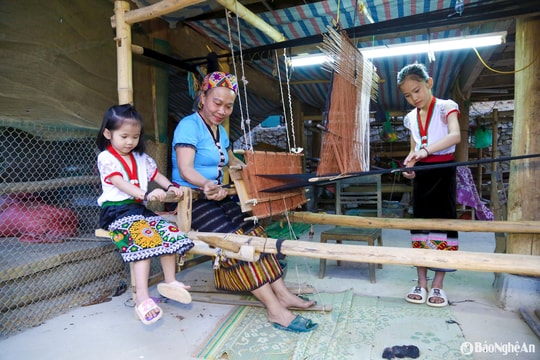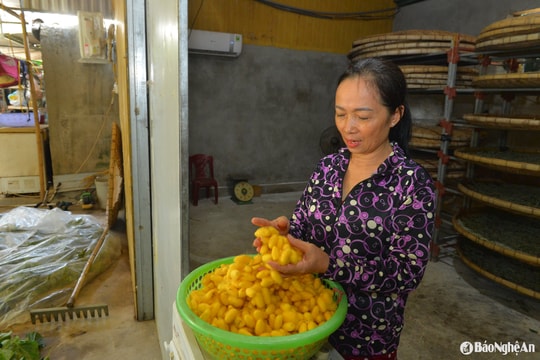"Keeping the fire" of mulberry growing and silkworm raising in the highlands
Mulberry cultivation, silkworm rearing and silk weaving are long-standing traditional occupations, closely associated with the cultural identity of the Thai ethnic group in Cam Muon commune, Que Phong district. In recent years, through the implementation of the "Skilled People's Mobilization" model, the mulberry cultivation and silkworm rearing profession in Cam Muon commune has been restored and strongly developed, opening up a sustainable livelihood for the people.
.png)
Khanh Ly - Thanh Phuc -Technique:Hong Toai• June 23, 2025

In the blazing summer sun in the highlands, under the ancient, peaceful stilt houses in Mong 1 village, Cam Muon commune, the Thai women and mothers are still diligently working on the steps of growing mulberry and raising silkworms.
Some take care of silkworms, some dye indigo, some boil cocoons, some spin, wind threads and dry trays of golden cocoons...
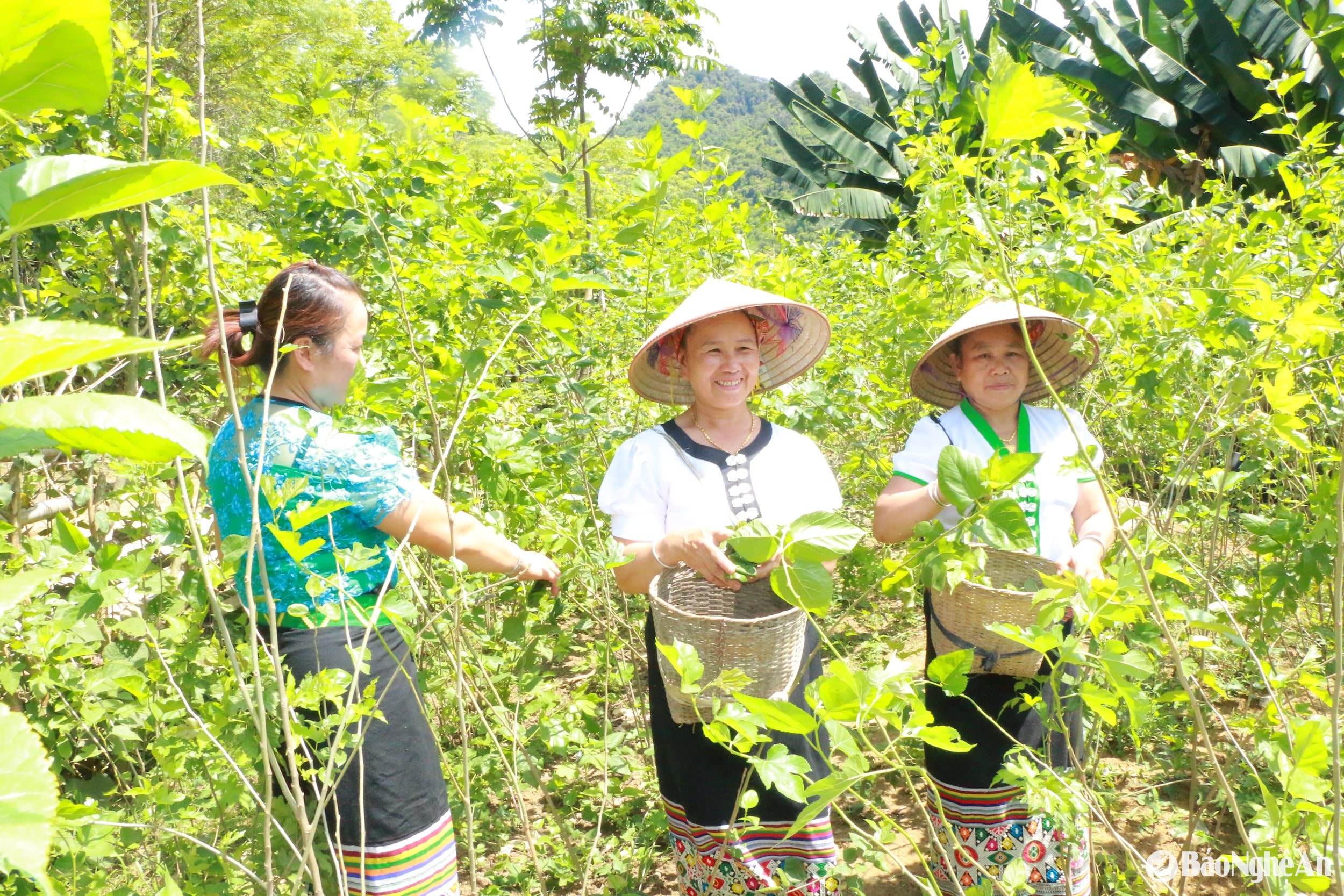
Mrs. Lang Thi Hoa (60 years old) in Mong 1 village was quickly winding silk threads into oval shapes and happily said that she learned to grow mulberry trees, raise silkworms, and reel silk to weave cloth since she was young, as passed down from her grandparents and parents.
“Previously, the products were mainly self-sufficient, serving the needs of the family, as dowries for daughters to marry, or people from upper and lower villages used to exchange products with each other. Currently, products from the stages of the craft can be turned into goods, so people are more excited,” Ms. Hoa shared.

According to the elders in the village, the profession of growing mulberry and raising silkworms in Cam Muon commune has existed for a long time, passed down from generation to generation. People often take advantage of the fertile land along Quang stream to grow mulberry as the main food source for silkworms. The silkworms in Cam Muon commune are mainly local silkworms, suitable for the climate conditions. Although small, the cocoons are of high quality and easy to spin silk. Silkworms eat 4-5 times a day.
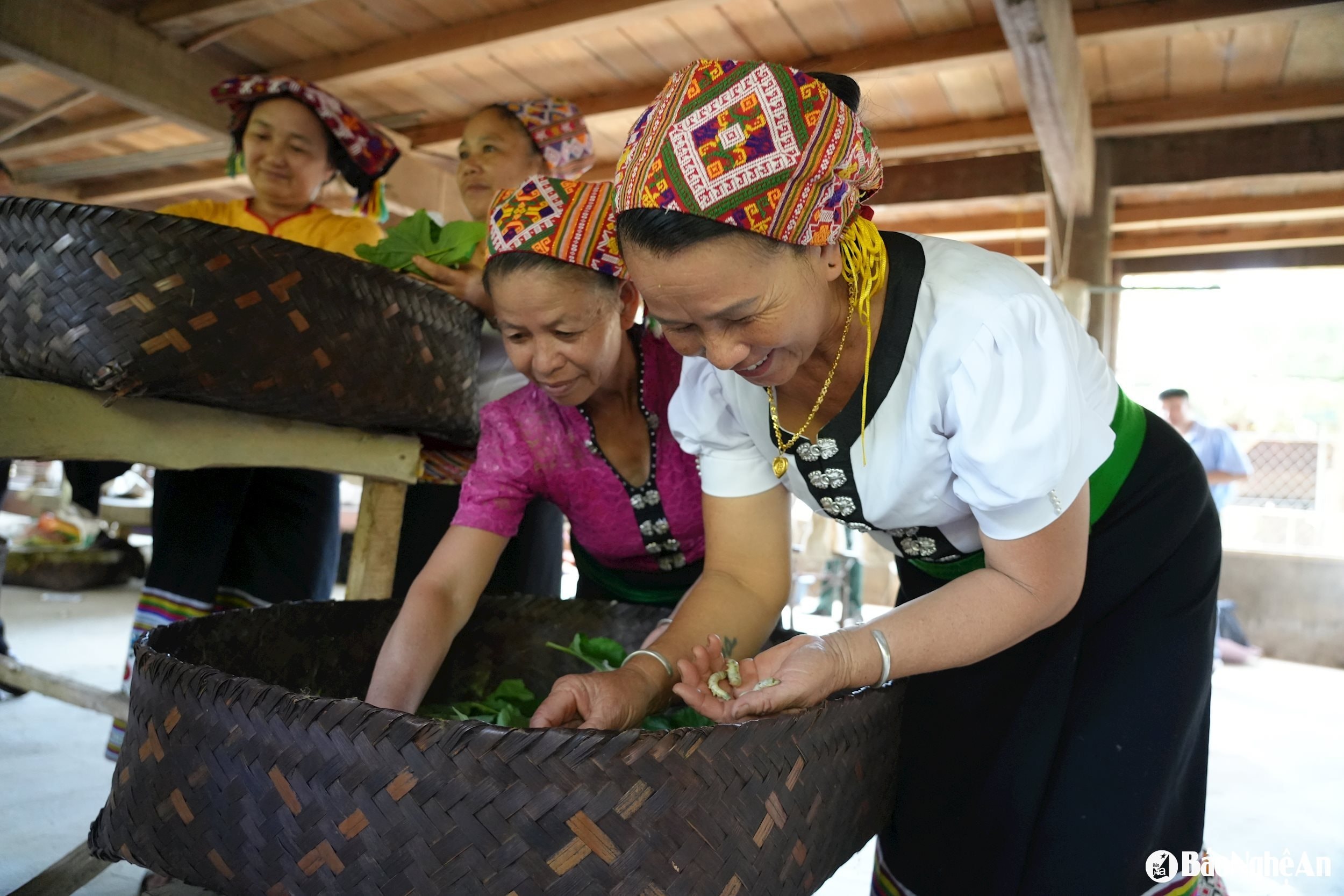
This job requires regularity, patience and close observation. This is an important stage that determines the cocoon yield, so it is quite hard work, "raising pigs while lying down and raising silkworms while standing". After nearly a month of care, the silkworms will form cocoons and spin silk.
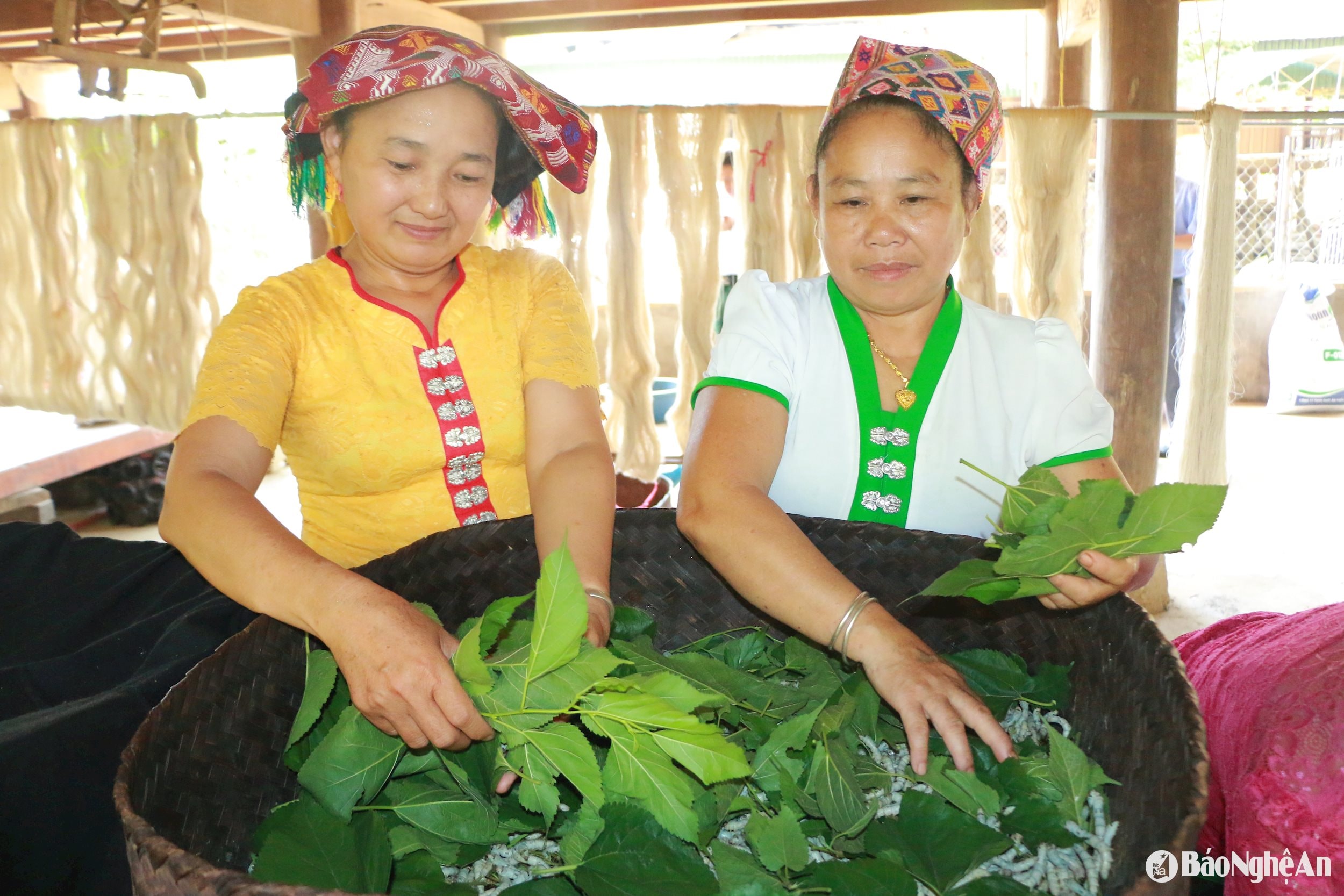
The golden cocoons are the result of a long process of hard work. The silk reeling process is done by hand. The cocoons are boiled and spun by hand.
After being spun, the silk is dried. The sunnier the weather, the more shiny the silk will be. If the sun is strong, it only needs to be dried for 2-3 days, but if the weather is cloudy, the silk will have to be dried for a whole week, affecting the shine of the silk thread. The thinner and more even the silk thread is, the higher its value, serving the purpose of weaving brocade and selling as a commercial product.

Raw silk is spun to increase its applicability. People can sell the yarn or continue to process it into fabric, increasing their income. Silk products are used by people to weave brocade dresses, scarves or sold to other weaving villages, contributing to increasing income, helping people to reduce their dependence on rice and pigs.
According to Ms. Vi Thi Thom, Mong 1 village: Weaving is a traditional sideline job of Thai women in Cam Muon commune. Thanks to local silk, input costs are low, and the products have high value. After dyeing, the silk is used to embroider patterns on dresses. Each product increases in value by 30-50%, expanding the consumption market.
Maintaining and developing the late-arising silkworm farming profession is both a way to generate income and contributes to preserving the traditional culture of our ancestors.
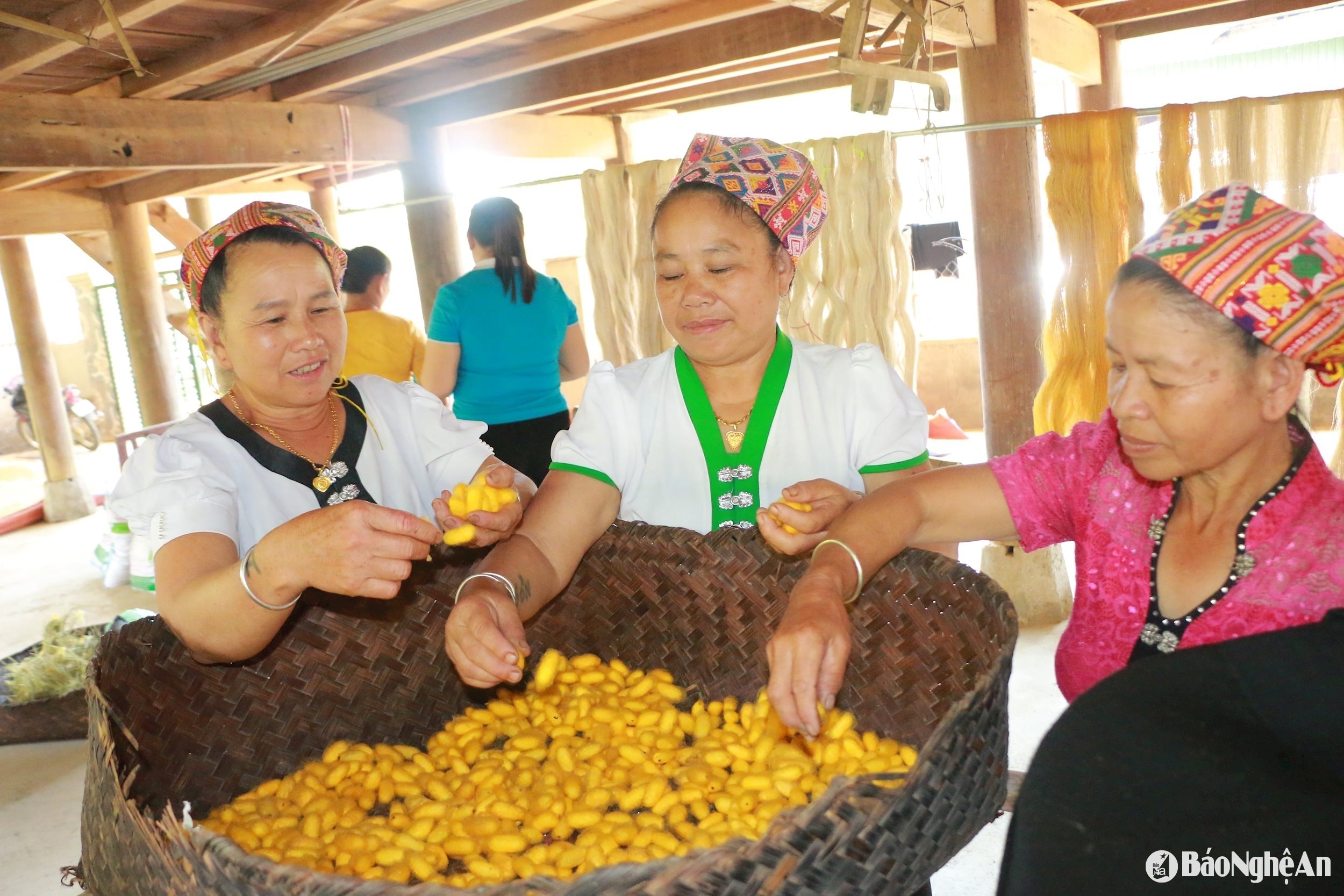
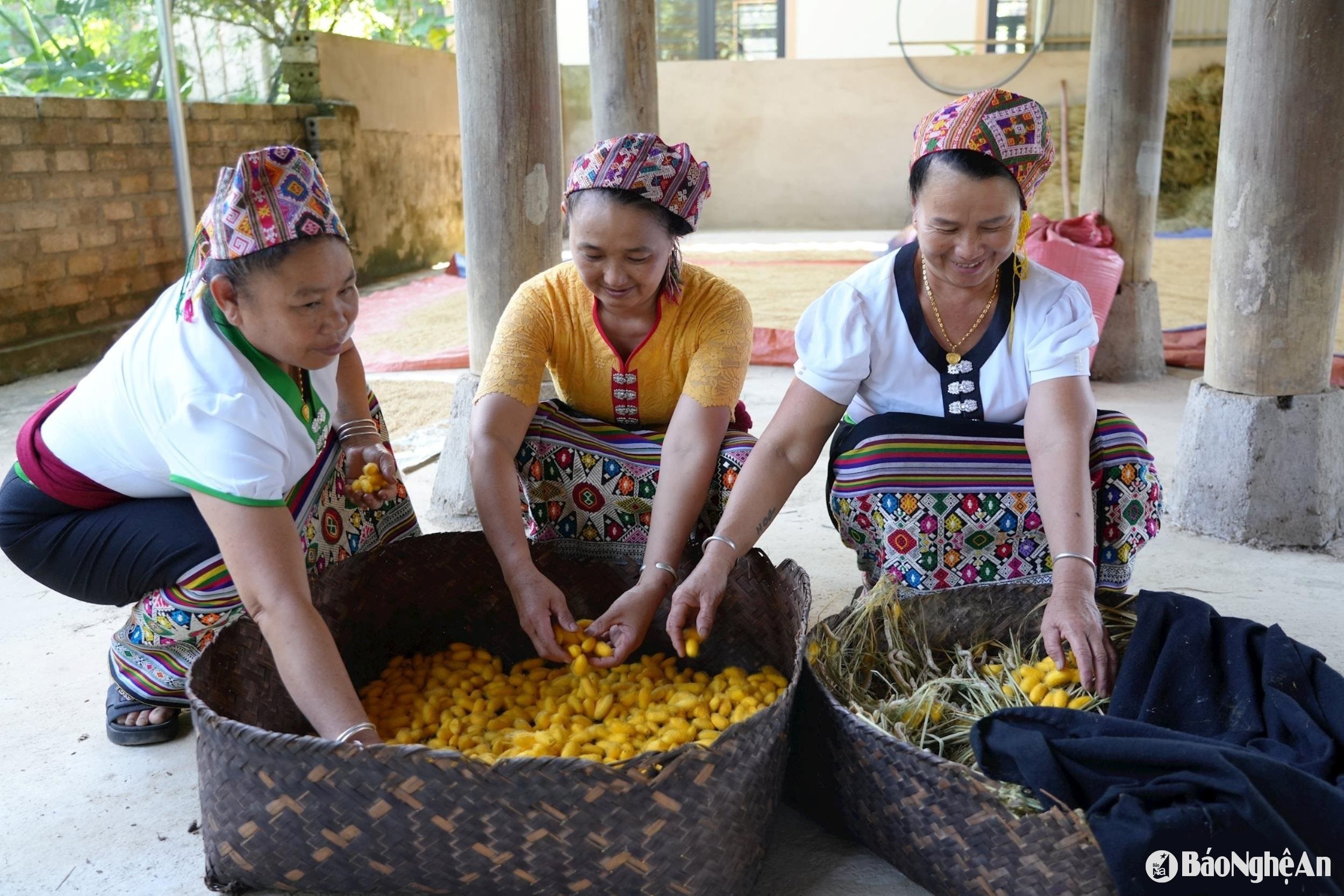
However, like many other traditional occupations, the silkworm growing, silk reeling and silk weaving professions in Cam Muon commune cannot avoid the gradual decline.
The young generation in the village does not want to follow their parents' profession because the manual production work is hard and the income is not high. Therefore, there are only a few small, fragmented, unprofessional production households, so the productivity and quality are not high, and the brand has not been created because there is no long-term development planning and orientation.
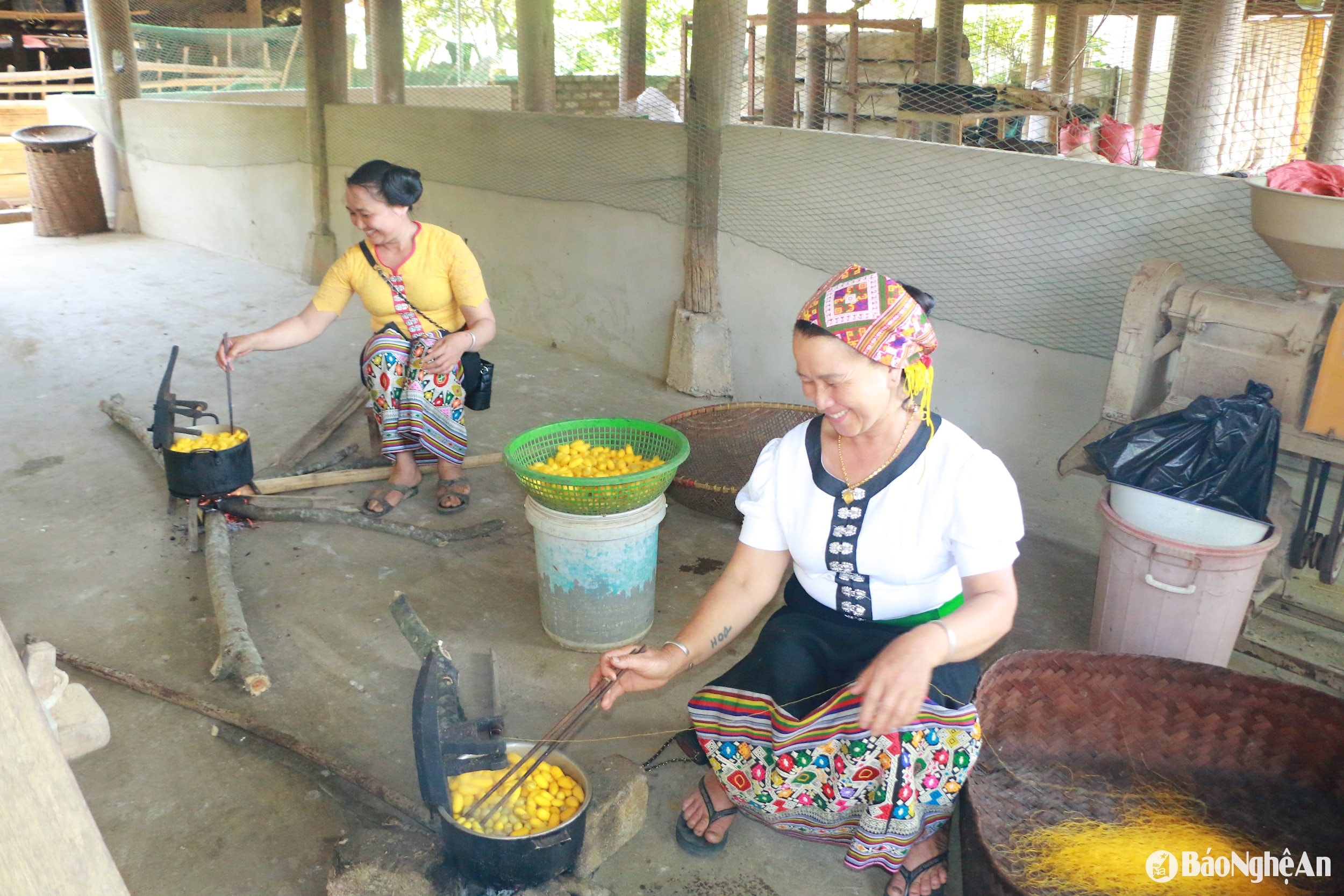
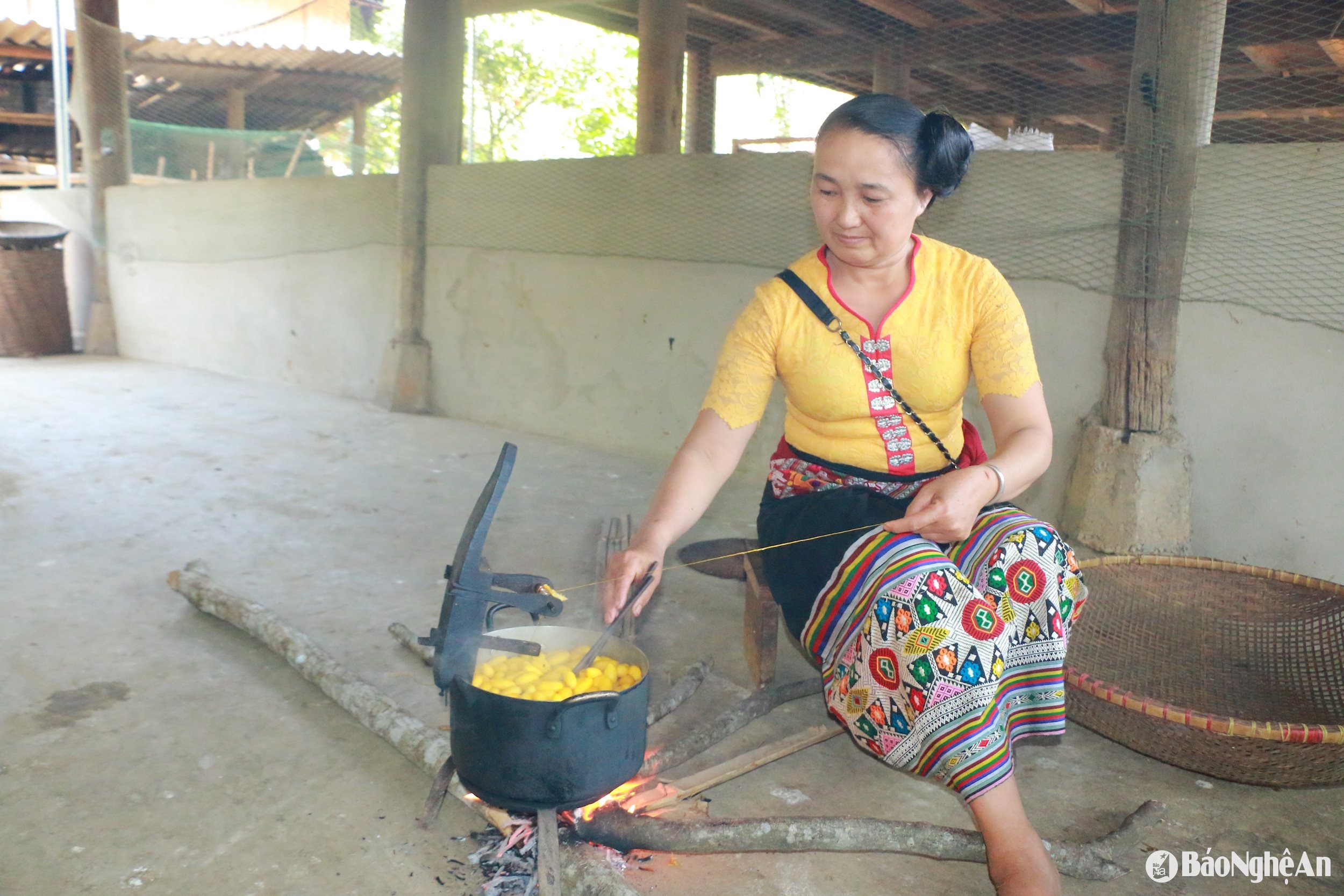

In order to preserve the traditional profession of our ancestors, maintain the cultural identity of the Thai ethnic group, and at the same time open up livelihoods for people, in 2023, with the support of the People's Committee (now the Propaganda - People's Committee) of Que Phong District Party Committee, the Party Committee of Cam Muon commune directed the People's Committee, departments, branches, and local socio-political organizations to develop the Project "Developing silkworms in Cam Muon commune for the period 2023 - 2025 and orientation to 2030" into a model of "Skilled People's Committee" as a basis for the People's Council and People's Committee of the commune to issue investment policies to develop silkworm farming in the commune in the coming period.
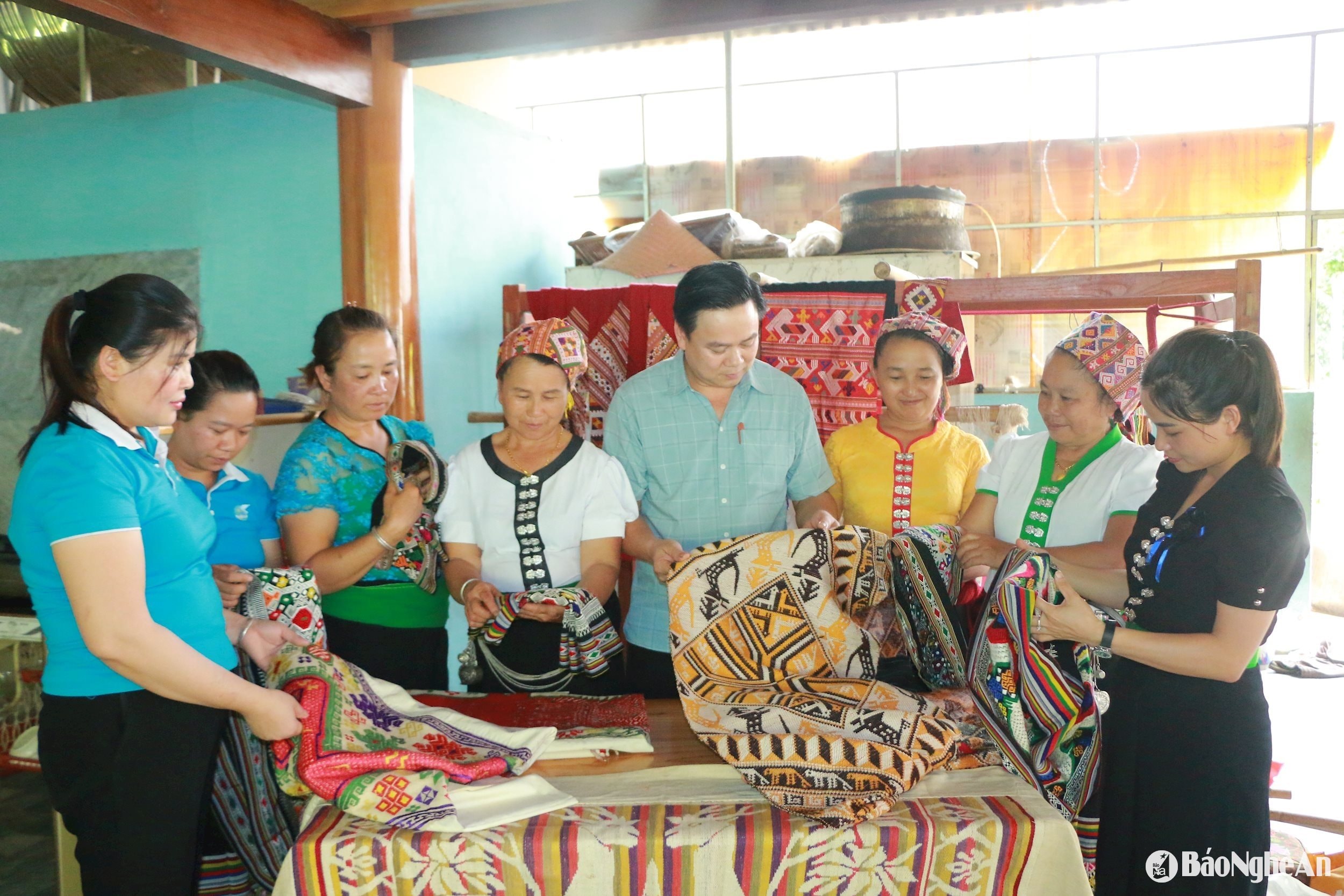
According to Mr. Lang Van Loan - Standing Deputy Secretary of the Party Committee of Cam Muon Commune: The commune has a policy of developing and expanding the area of mulberry cultivation and silkworm raising, shifting from self-sufficiency to commodity production, assigned to the Women's Union of the commune to implement. To support people in investing in production, the People's Committee of Que Phong District has supported the model in two phases with a total amount of 35 million VND, the commune supported 5 million VND.

Initially, there were only 10 participating households, but by 2024, the number had expanded to more than 20 households and now there are about 30 households. The mulberry fields are developed on fertile land along rivers and streams with an area of about 06 hectares, with an average mulberry growing area of 0.3 hectares per household.
Mulberry varieties grown in the area are all high-yielding and high-quality varieties, with an average yield of 25-28 tons/ha. People have a closed production process in 4 stages: mulberry planting - silkworm rearing - silk reeling - weaving.

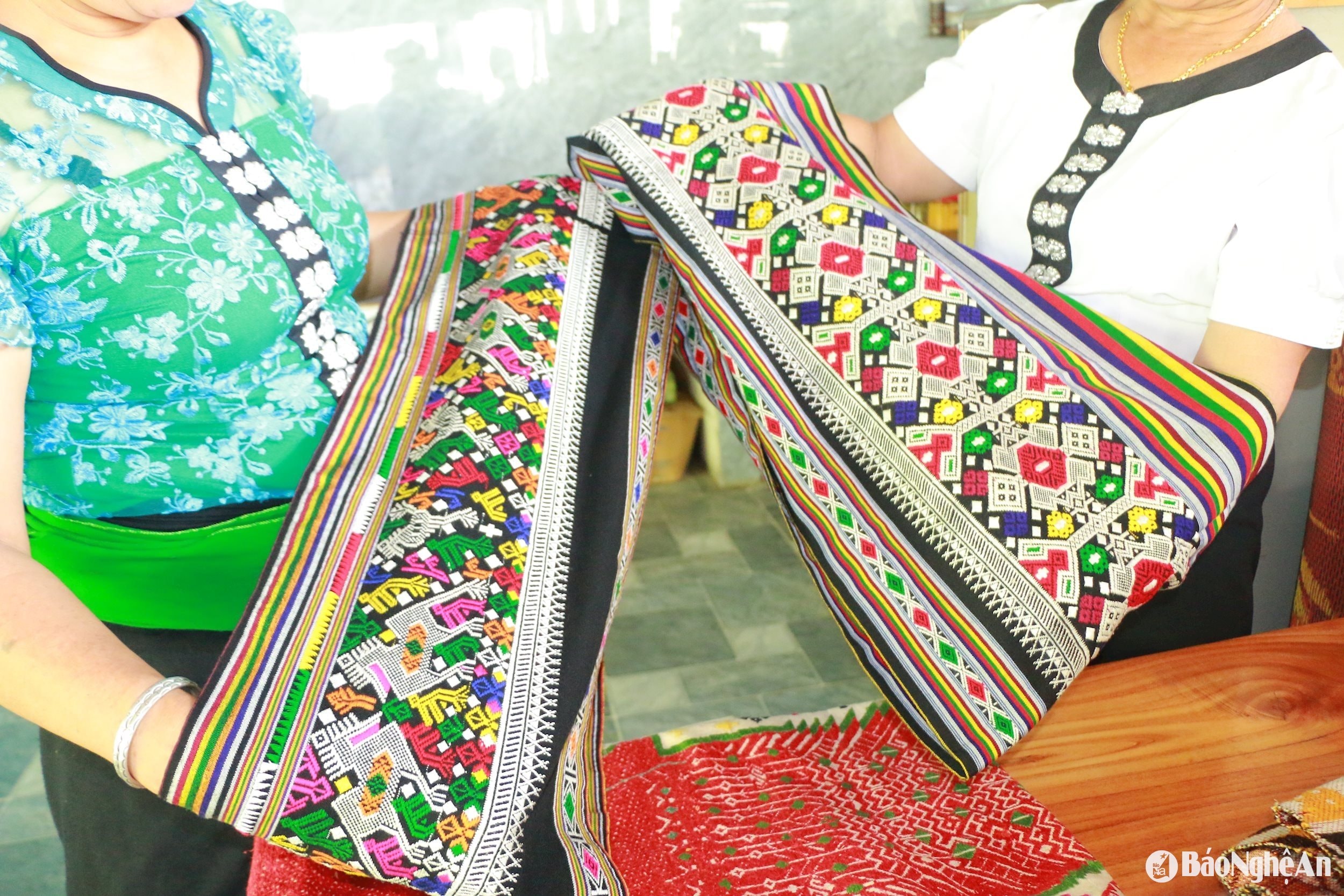

Households not only sell silk or weave brocade products into commodities but can also sell silkworm breeds to households. In 2024, the commune's silkworm cocoon output will reach 6.0 tons, with an income value of nearly 480 million VND; in 2025, the silkworm cocoon output is expected to reach 6.5 tons, an increase of 0.5 tons compared to 2024; with an income value of nearly 520 million VND.
Currently in Cam Muon commune, there are some private traders purchasing silkworm cocoons, silk threads, and brocade weaving products from the people. Each kilogram of silk thread costs from 800,000 to 1,000,000 VND, the price of cocoons ranges from 100,000 to 120,000 VND/kg, which is an important source of income for households.


The current production linkage between private traders purchasing cocoons and silk threads with silkworm breeders creates a stable source of output and prices for the people. Brocade products made from natural silk, hand-woven by the skillful hands of Cam Muon people are currently favored by tourists, also opening up the potential for connection with eco-tourism and community tourism.

Taking us to visit the mulberry growing, silkworm raising, silk reeling and silk weaving models in Mong 1 and Mong 2 villages, Ms. Lang Thi Huong - President of the Women's Union of Cam Muon commune said: The members of the weaving group are also supported by the Institute for Consulting on Rural and Mountainous Socio-Economic Development.(CISDOMA) in coordination with the Project Steering Committee of Que Phong district created conditions for visiting and learning about the sustainable silkworm farming model in the direction of cooperation in Dien Chau, Do Luong, and Quy Chau districts. At the model, members shared and learned experiences about the activities of silkworm cooperatives; techniques of silkworm farming for cocoons, silk reeling and spinning, purchasing and selling silkworm products; techniques of selecting breeds, planting, caring for, harvesting mulberries for silkworms and processing silkworms into food products (dried silkworms, silkworm wine, silkworm starch)...
Some members have experimented with silkworm rearing (silkworms from the model) using the shared techniques and in a short time have clearly seen the difference in productivity and have identified techniques that may be suitable for local application. In addition, CISDOMA also provides bio-fertilizers to support people in Mong 1 and Mong 2 villages to develop the mulberry planting - silkworm rearing model and preserve the traditional brocade weaving craft.
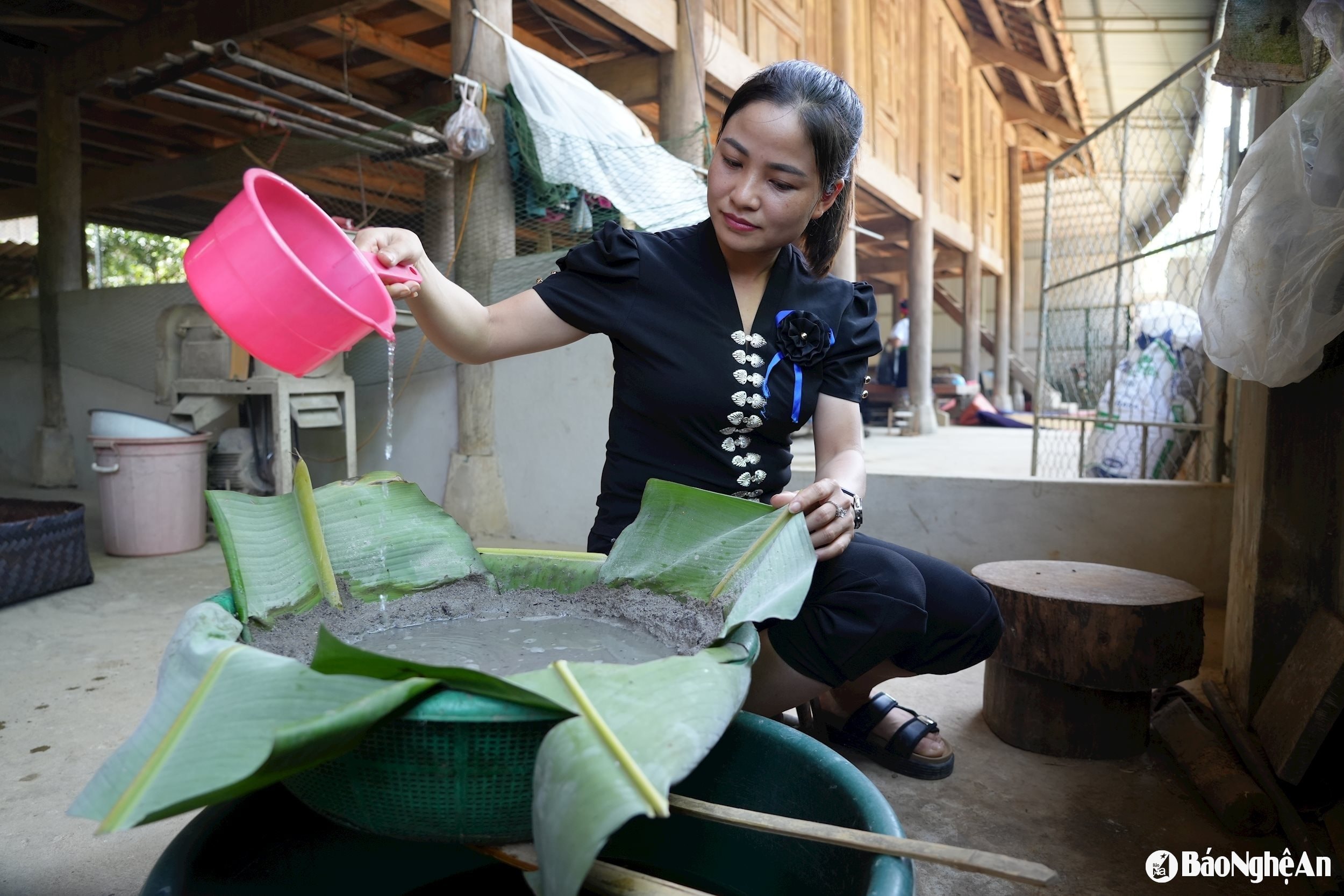
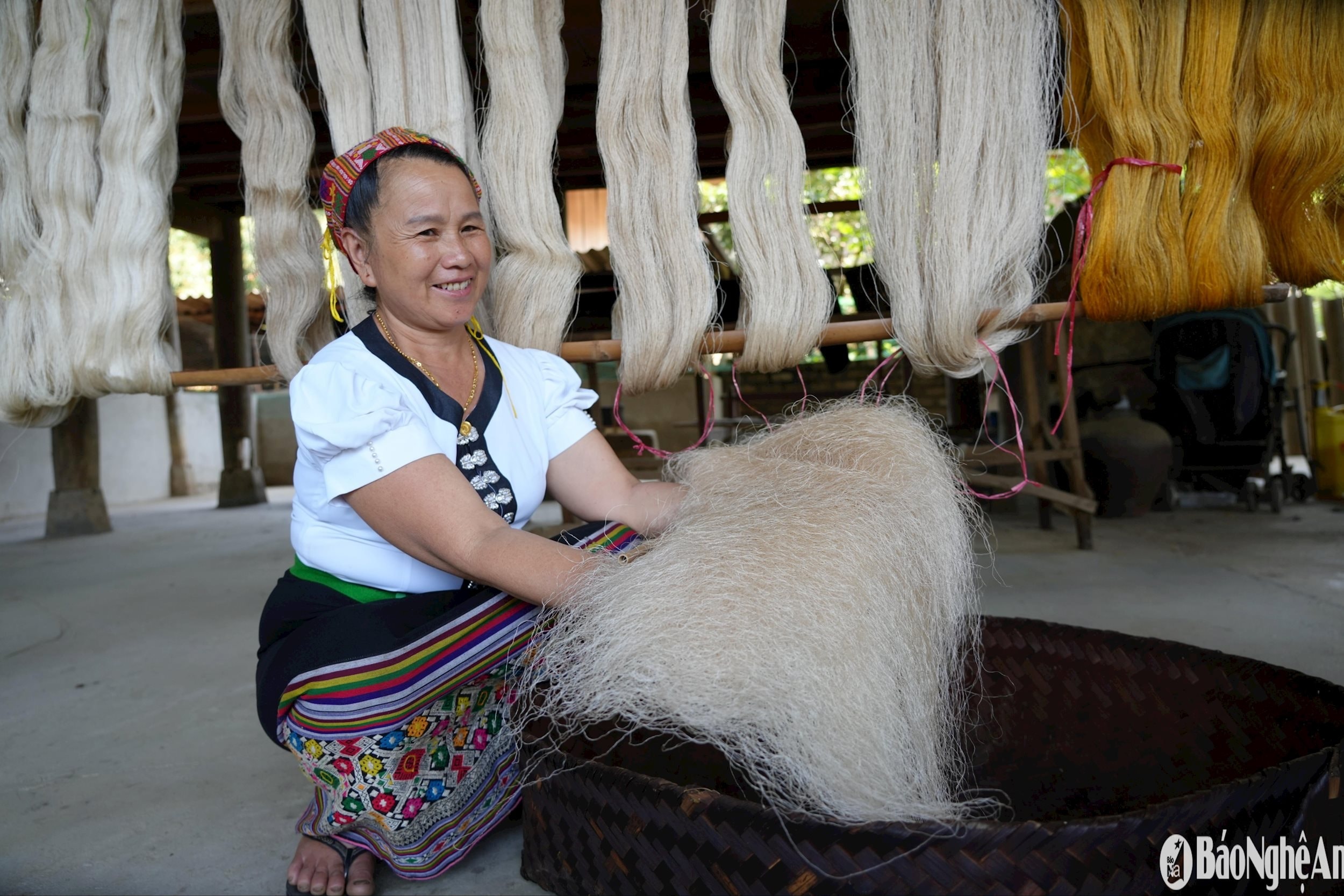
Ms. Vi Thi Huong, 59 years old in Mong 2 village, has been involved in the silkworm farming for decades. She said: Visiting and learning about the models helps her and other households gain a lot of new knowledge, especially techniques for taking care of silkworms according to their age, each stage in the life cycle, how to prevent diseases for silkworms, how to choose silkworm and mulberry varieties, thereby improving the productivity and quality of mulberry and silkworms to increase livelihoods and develop the silkworm farming village in her commune better.
Ms. Huong also said that currently, many households mainly sell silkworms and silk. If they weave brocade products, the cost is higher (skirts cost 1 million - 1.2 million VND/skirt; Pieu scarves cost 800,000 - 900,000 VND/scarf).
Cam Muon silk products are popular with tourists thanks to their natural colors and handmade patterns. This is a potential direction to combine traditional crafts with eco-tourism, experience, open a way out of poverty, and create stable livelihoods for people. From the initial 10 households, up to now, there have been 30 households participating in the model, with an annual income of 20 - 50 million VND/household thanks to selling cocoons, silk threads, and brocade weaving products.
However, according to Ms. Lang Thi Huong - Chairwoman of the Women's Union of Cam Muon Commune: Currently, silkworm breeding facilities mainly take advantage of family space, so they are affected by temperature and humidity, as well as environmental sanitation issues, which greatly affect production efficiency. Investment capital to develop and expand mulberry growing and silkworm breeding areas is still limited. The output for products has not been expanded, mainly consumed in neighboring areas.

In the coming time, Cam Muon people hope that all levels and sectors will pay more attention and create conditions for people to borrow capital to invest in expanding the area of mulberry cultivation and silkworm rearing; support investment in technology improvement; link and cooperate to find stable output for craft village products; create favorable conditions for planning and implementing the conversion of crop structure to develop production, because the current fertile land fund along the Quang River and streams is quite large and can be converted to mulberry cultivation. Especially support the locality to build exhibition houses and introduce products from mulberry cultivation, silkworm rearing, silk weaving.
This is very meaningful for a particularly difficult area like Cam Muon commune - where 1,200 households of three ethnic groups Thai, Kho Mu and Kinh live; because it will further motivate the people here to continue to preserve, revive and develop this proud traditional craft.
Especially recently, the Ministry of Culture, Sports and Tourism has decided to announce the list of national intangible cultural heritage for the traditional brocade weaving craft of the Thai people in Nghe An province.


.jpg)
